Accepted Scientific Name: Cleistocactus saimapatanus cv. Otto Schultz
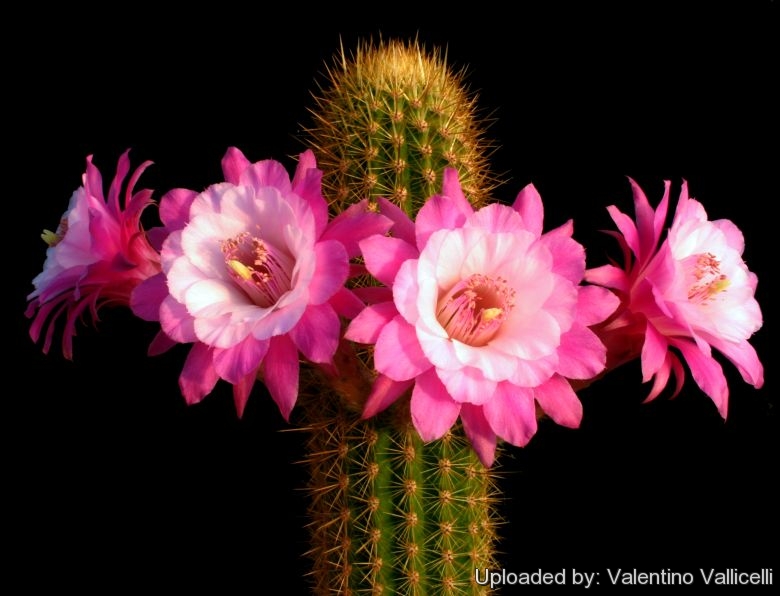
Akersia cv. Otto Schultz (Cleistocactus saimapatanus cv. Otto Schultz) Photo by: Valentino Vallicelli
This plant don't need any comment!
Synonyms:
Description: This is a famous hybrid between Akersia roseifloraSN|590]]SN|590]] and an hybrid of Echinopsis .
The standard Akersia roseifloraSN|590]]SN|590]] (nowadays regarded as a synonym of Cleistocactus samaipatanusSN|3762]]SN|3762]]) is a trailing or erect slender succulent that grow in group branching from the base. It's stems are covered with stiff golden spines and grows up to 1,5 m long x 2,5-5 cm in diameter.
The hybrid ''OTTO SCHULTZ'' is more robust and forms slender columns 5-7 cm in diameter also covered with short golden spines. It branches readily and each stems lasts for several years, growing increasingly woody, before it should be removed to encourage young growth. The flowers are a lovely lilac pink, and are some of the best hybrid cactus flowers. It blossoms freely in cultivation . The brilliant flowers don't close at night, and they last about 2-4 days. They come in flushes in late spring to early summer.
Subspecies, varieties, forms and cultivars of plants belonging to the Cleistocactus samaipatanus group
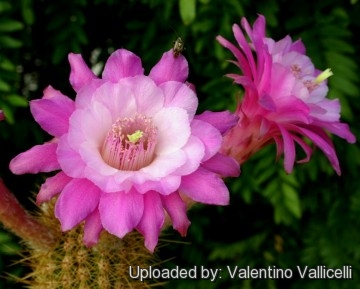 Akersia cv. Otto Schultz (Cleistocactus saimapatanus cv. Otto Schultz) Photo by: Valentino Vallicelli
Akersia cv. Otto Schultz (Cleistocactus saimapatanus cv. Otto Schultz) Photo by: Valentino Vallicelli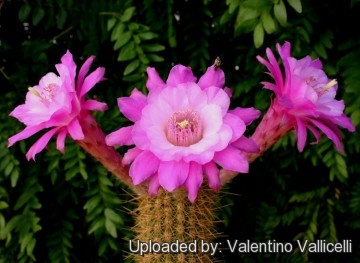 Akersia cv. Otto Schultz (Cleistocactus saimapatanus cv. Otto Schultz) Photo by: Valentino Vallicelli
Akersia cv. Otto Schultz (Cleistocactus saimapatanus cv. Otto Schultz) Photo by: Valentino Vallicelli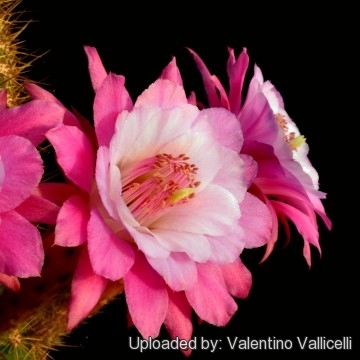 Akersia cv. Otto Schultz (Cleistocactus saimapatanus cv. Otto Schultz) Photo by: Valentino Vallicelli
Akersia cv. Otto Schultz (Cleistocactus saimapatanus cv. Otto Schultz) Photo by: Valentino Vallicelli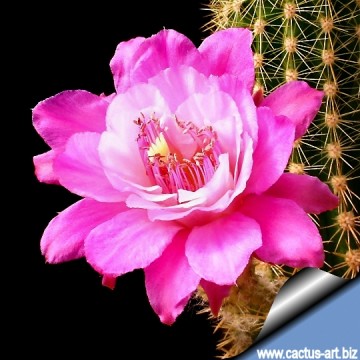 Akersia cv. Otto Schultz (Cleistocactus saimapatanus cv. Otto Schultz) Photo by: Cactus Art
Akersia cv. Otto Schultz (Cleistocactus saimapatanus cv. Otto Schultz) Photo by: Cactus ArtCultivation and Propagation: Cleistocactus saimapatanus cv. Otto Schultz is of easy culture, which makes it a good cactus for beginners.
Soil: Use a loose well drained cactus mix.
Repotting: Since they are rapid growers need plenty of space for their roots, repotting with fresh potting-mix should be done every other year or when the plant has outgrown its pot. However, repotting doesn't necessarily mean they'll need larger containers.
Sun Exposure: Require filtered bright light, partial sun or light shade, but not in full sun that will sunscald it.
Watering: They require moderately watering through the growing season. This can be done weekly or more frequently during the summertime, if the weather is sunny enough, but allow to dry fully before watering again. Kept this way, plants will show a healthy growth. Keep rather dry as soon as the temperature starts dropping in October and keep it dry in winter. The plant survives outside without protection in winter (cold hardy to -2° ) but is then somewhat prone to rot, too.
Fertilization: Give an occasional high potassium liquid feed during the active growing period.
Hardiness: Winter care presents no problems at temperatures from 5 to 15 degrees centigrade with plenty of light, but frost hardy to -2°C for short periods if very dry. This plant needs a period of cool rest in winter to produce flowers abundantly. It flowers freely indoors too if conditions suit it.
Pest and diseases: They are generally fairly easy to grow, especially if kept pest-free. They are susceptible to, scale insects and spider mite. Watch carefully for infestations of stem and root mealy bugs, and damage from these may well initiate fungal attack.
Propagation: Easy to propagate from cuttings or seeds. Take cuttings spring or summer, let them dry till the ends callous well. Then replant them in fresh cactus soil that is ever so slightly moist, and keep it that way till they root. Surface sowing is the best; seeds germinate in 14-28 days at 20° C , remembering that seedlings dislike strong light and dry conditions.














